It is the familiar spirit of the place; It judges, presides, inspires Everything in its empire; It is perhaps a fairy or a god? (No, in fact it was a cat, ed)
– Charles Baudelaire (the flowers of evil, 1857)
The call of the desolate, dank and dead. Twilights veil settles thickly on a resting landscape. Nightfall’s gloaming orange light catching the harl, billowing mist unrolling like a generous feather duvet. Vapour peaks and troughs captured by the sinking Valium sunset form a myriad of grotesques as they rise and fall from sight. Unrelenting drizzle frames Scotland in driech endless grey. October country. A country where the ‘others’ are never far away. A familiar feeling this time of year.
In Scottish folk magic communicating with ‘the other’ is a clear theme. The other takes many forms. The good folk, the sidhe, the dead, the ancestors,the slaugh and perhaps even the de’ill himself. All colourfully reviewed in the witch trials of Scotland.
I read the witch trials contemplating folk magic practices. (This time looking for evidence of slake stones). Reading through on this occasion however, something occurred to me. In a number of these trials the accused speak of ‘familiars’. In the usual pomp of an investigator the familiar spirit is sent by the devil or the devil himself. A mysterious man in black. Where ever present, sex and the bacchanal quickly follow. Reading like an imaginative man’s masturbation fantasy. Yet in a number of the trials this “familiar spirit” is encountered as a dead person. Someone the accused recognised from community or family. Someone who had died in a battle or other accident. No beast like copulation was associated with them but promises of service in exchange for no material want. A contact on the “otherside”. A bit of a change from the usual narrative, I kept looking for these examples in the trials. Slake stones quickly forgotten. More examples where the dead become the emissary of the accused appeared. Helping them to heal, harm or help others in their community. This was no coincidence.
The writing so far has led to this article. If you haven’t done so it might help you to read them. The importance and difference of the process of belief behind Scottish Folk Magic has been established in the introduction. We have explored Scottish, Viking and Roman death customs and how they play and merge into one another. Examined fear of the restless dead and how folk magic activities to protect against the dead rising are indistinct from those used to protect from the sidhe and the good folk in the first part. Now we explore the role of the dead in the role of traditional witches’ servant.
The familiar.
The dead and the daoine maithe (good folk).
The folk tales are filled with stories of the dead and the other world (fairyland). Though not Scottish specific the Historia rerum Anglicarum1189 tells the story of the green children. These green coloured children, with weird clothes and speaking an odd language, emerge from a place called St Martin’s land (see Martinmass). An underground land with no sun or moon. Always in a kind of twilight. The habitual food of the children were broad beans. (As we have already discussed in part one this was the traditional food of the dead for the Romans).
We have already mentioned the tale of Sir Orfeo when he encounters the maimed dead who would have formed the mass of the restless dead:
“Than lokyd he a-boute the walle,
And saw it stond over alle
With men that wer thyder brouzt,
And semyd dede and wer nouzht;
Some ther stod with-outyne hede,
And som armys non hade,
And some ther bodes had wounde,
And some one hors ther armys sette,
And some were strangyld at ther mete,
And men that were nomene with them ete;
So he saw them stonding ther.
Then saw he men and women in fere,
As thei slepyd ther undryne tyde,
He them saw on every syde;
Among them he saw hys wyve,
That he lovyd as hys lyve “
The similarities of the Sidhe and the dead are many. We discussed some of these in part one around folk practices associated with death. The usual suspects – Rowan wood, Iron and salt and following the right way of things all make an appearance. The sidhe and the dead seem to live in the same place – the same burial mound or fairy rings, such as the old Raths. They are around at the same time in the festivals – Bealtainn, Yule and Samhuinn -known as the Slaugh or fairy host. At twilight and liminal spaces, there you’ll find them both lurking. Both are responsible for spreading disease, death, maladies and madness. There are just too many similarities to be coincidence. Some people claim their familiars come from “the otherworld”, gifted by the sidhe. These Sidhe refashioned as demons by a devout clergy and managed by those who follow the “black arts”. These demons becoming familiars. This line of thinking links us to the distinct possibility the dead are familiar spirits and the demons of the faithful.
The dead as a Familiar spirit
The first use of the word “familiar spirit” according to the Miriam Webster dictionary occurred in 1545 and familiar is defined thus:
- 1: a spirit or demon that serves or prompts an individual
- 2: the spirit of a dead person invoked by a medium to advise or prophesy
The idea of the familiar links well to the idea of the otherworld and the dead. The online Etymology dictionary states “its meaning is demon, evil spirit that answers one’s call” is from 1580s (familiar spirit is attested from 1560s) -The use of this word coming into usage when we have the start of the witchcraft trails is of interest); earlier as a noun it meant “a familiar friend” (late 14c.). The Latin plural, used as a noun, meant “the slaves,” also “a friend, intimate acquaintance, companion.”
The root of the word comes from “familiar (adj.) – mid-14c., “intimate, very friendly, on a family footing,” from Old French famelier “related; friendly,” from Latin familiaris “domestic, private, belonging to a family, of a household;” also “familiar, intimate, friendly,” dissimilated from *familialis, from familia (see family). From late 14c. as “of or pertaining to one’s family.” Of things, “known from long association,” from late 15c. Meaning “ordinary, usual” is from 1590s.”
The journey of the term familiar, from family, intimate friend to a spirit, demon or a dead person seems to echo the journey the dead have made in our own culture. From possible early hero deification and ancestor focussed way of life BC. To the restless dead of the 5th – 8th century AD. This once familial influence changed through alchemical process taking place throughout the middle ages. The age of the grimoire traditions and influence of Arabic magic, changed them to the demons of the ecclesiastic, this became an affiliated demon or dead spirit by the 16th century. Finally, they rest in an all but forgotten footnote of the 21st century.
In earlier writing, we have explored how ancestor worship was important in Scotland. We have explored ideas of tutelary spirits attached to clans. On occasion, created from the passing of those in the clan with the idea of defied dead or community as in the case of an Bean Si. I sometimes wonder if the familiar is a survival, at least ideologically, of a possible form of ancestor veneration? A personal “tutelary spirt” that would help (in a very different form) in later centuries? It’s interesting to postulate ideas. To question further we need to look at the 16th – 18th century witch trail records.
First a warning …
It’s difficult to generalise older existent belief from early modern sources. It’s like trying to solve Cluedo with Monopoly. The boards might be vaguely similar and some of the rules the same but there are too many differences to reach an idea about the rules and how to win the game. The older sources are unreliable and foggy. The more modern sources bias. Only free associations and vague hypothesis can be established. With this futility being laid bare I hope exploring these ideas will renew interest in this area. Maybe then we can start to understand it better.
We must try and be mindful of the voice of those giving the testimony. The sources are bias against them. (The exploration of the lived experience of those within the trails is outside the scope of this article but what I’m referring to here is the educated vs non-educated, poor vs rich, man vs woman, Satan vs god, authentic vs fabricated, power & control, state vs community impact). Only relaxed comparisons can be drawn from earlier beliefs to those found within the witch trial literature for these reasons.
I also make some assumptions. One, mention of the good folk and the dead within the witch trial literature would have been of no interest to the prosecutors who were looking for truck with the devil, Satan and other evil things. So, I assume fairy mentions would have most likely come from those being prosecuted and from a genuine place if they were included. The second assumption is the idea of a “fairy faith” was widespread. It would be safe to assume the influence of the devil would later have been engineered into the confession to prove the persecutors point. For this reason, certain fairy characters might have been omitted or changed to Christian devils. The role of the dead might would have been overwritten in some way. In fact, fairy characters and the dead might be one and the same.
The Dead as Familiar as found in the witch trial literature
The Scottish witch trials give us plenty of information about the links of the dead to the land of the good folk. Emma Wilby argues it’s important to note difference between English and Scottish Witch trail testimonies. Scottish Familiars tend to appear in human form and be associated with a witches Sabbath. In England, the familiar tends to be an animal and is associated with the domestic life of the accused witch. This might stem from different beliefs or approaches to the idea of witchcraft or a different idea of dead as a tutelary spirit of the clan or family etc.
There are many Scottish trial records where the accused spoke of the dead and were suspect of witchcraft. Alison Peirson, tried in 1588, said she met a dead person whilst in fairyland, a Young Maitland of Lethington, old Buccleugh and others including her own relations. Bessie Dunlops “fairy familiar” was Thomas Reid a man who had died at the battle of Pinkie Burn, a man in black, calling himself a crofter, was named John Stewart and had been killed at dusk and was “not living or dead”. Other trials are listed:
- Agnes Hendrie (1675) familiar spirits called Peiter Sollowy;
- Jonet Hendrie (1675) familiar was called Laurie Moir who she met at the Cannieman’s Hollow near culross;
- Isobel Inglis, (1675) her spirit was called Peter Drysdle (High Court Process Notes JC2/14 p. 346-354);
- Patrick Lowrie, (1605) was given a hair belt by his familiar spirit Helena McBurnie (Books of Adjournal JC2/4 fo. 58v – 60v);
- Andro man, (1598) all sorts of spirits but met Thomas the Rhymer and James the IV and his familiar was called Christonday (Spalding Club Miscellany Vol I, pp. 117-125).
- Issobell Watsonne (1590) Thomas Murray was her spirit (Stirling Presbytery records CH2/722/2).
- Jean Weir (1670) a general spirit women acting as intermediary with the fairy realm with no name given offers to introduce Jean to the queen of fairy. (High Court Process Notes JC2/13 ff. 9v-12v).
This list is by no means exhaustive. For the inquisitive and committed there will be greater clues in the trials themselves which I have included in brackets.
The trial cases suggest the dead who become familiar spirts, met their end in a bad way or at a liminal time. For example, Thomas Reid died in battle and John Stewart died at twilight. This feeds into the idea of those “taken” died unhappy and links to our Norse and Anglo-Saxon ancestor’s ideas of death. (We have explored the idea of a bad death in some depth in the earlier part of the series). This would enable the orientation of the familiar modality to the restless dead and provides us evidence about how the familiar is linked to these concepts.
A great English example comes from (THE) Doreen Valiente. The role of the dead as familiar spirit is found in “Where Witchcraft Lives” [1962] a kind of phenomenological primer she wrote of her local stomping ground at the time. (A great starting point for anyone who works animistically I would argue). Doreen mentions two women in Sussex both denounced as witches. Susanna Swapper and Ann Taylor. Ann Taylor and Susanna both said they saw spirits of the dead. Susanna talked to four spirits – Richard, Robert, Catherine and Marjory. Ann Taylor spoke to up to 80 or so in number of them. (Doreen doesn’t seem to know why Ann Taylor refers to them as “Fairies.” I think we can maybe see a reason why she might). All Susanna’s spirit were mostly clothed in white, one with a green waistcoat. They advised Susanna where treasure was buried. On another occasion Richard, her main familiar (or ‘who seems to be her main communicator’ as Doreen puts it), takes her to another place where treasure is buried. There she sees the “queen of fairy over a hedge with a man in black”. (p31 – p33 of Where Witchcraft Lives). Here we see the familiar in the role of helper and intermediary. A very traditional familiar role.
The concept of the dead and the otherworld is not unique. In fact this concept has had a lasting impact on Scotland’s culture and thinking. The idea of the good folk being the same as the dead were supported by famous philosophers such as Thomas Hobbe: ‘Faeries are Spirits and Ghosts’, and ‘Faeries and Ghosts inhabite Darknesse, Solitudes, and Graves.’ [Lathan, The Elizabethan Fairies (Columbia University Press: New York, 1930), p. 45] Similarly Robert Kirk and James Garden – ‘these learned commentators accurately reflected popular belief is illustrated by the fact that many people claimed to have seen dead friends and relatives in fairyland.’ [Emma Wilby, Cunning Folk & Familiar Spirits, p. 18].
The familiar – The offer and the Pact
The familiar would appear when the witch needed help the most, or when in a particular liminal place. In the case of English witch trails familiars were passed down through the generations. Interestingly the Scottish trial records imply the first thing the familiar did was offer help then went on to offer a meeting with others form the otherworld. (Here the Christian would scream demonic entrapment). You can hear Ayrshire witch Bessie Dunlop’s voice almost at exhaustion as she met Thomas Reid her future familiar. She was in great distress and poverty; her husband and child were sick. In her own words, she “wald trow (trust) in ony bdye did her gude”. Thomas came when she needed the help most. Richard, Susanna’s primary familiar, originally offered to show her where the treasure was buried. Richard, (Susanna’s familiar) later said that if “she would kneel to her [“queen of fairy”] she would give her a living” if she did she would be free of want. A similar role is played by the Sídhe or good folk in the fairy tales we have today. Freedom from want would have been the ability to earn a basic income by working as a community healer or spea wife etc. This ability would be granted by their relationship with the other. Perhaps the gift of the second sight was granted. All this engineered through a first meeting and through a promise or pact made.Here we diverge from the idea that “psychic powers” are granted by a gift of genetics rather in Scottish Lore they are gifted by the spirit from the other world.
The familiar pact, is similar to the promise made by the Milesians to honour the Tuath(a) Dé Danann each year with milk and grain. Similarly, the good folk would ask for milk and grain on a stone outside the farm. This is similar to the pacts made throughout the animistic world. If the promise wasn’t kept the crops and farm life would suffer. Familiar’s asked for an offering and promise to be kept. Just like the Sídhe. Sometimes all that was asked was “faithful service” or to ‘keep the counsel’ of the familiar. Others were asked to renounce their Christian Faith. I think personally this was a bit of an addition by the persecutors to prove the infernal nature of the bargain. What was once a pact to be “faithful and keep promises” was moved to the distorted belief the demonic familiar would ask for regular blood donations and the soul of the covenanter.
This belief about the soul might be an artefact from the idea of the Sabbath and journey into fairy land which might happen bodily to some or through sleep to others. As Emma Wilby states ‘after natural death human souls might find themselves in fairyland, or living humans taken into or visiting the fairy realm could find themselves unwilling or unable to leave, resulting in the death of the mortal body.’ [p102, Cunning Folk and Familiar Spirits for more ideas about this]. This idea could have then developed into the idea of Satan stealing your soul. That good old interpratio christiana we experience when we are exploring these ideas.
Conclusion
Through these articles we have explored the role of the dead as familiar spirit. It is clear is the role the dead play in the Scottish witchcraft trails and familiar relationships is understated in current thinking. It’s impossible to disregard how closely aligned the dead are to the land of the good folk and the sidhe and in turn how the Sídhe became Christian demons. The role of the dead as ‘first contact’, offering help or intermediaries is demonstrated. There is an example of the intermediary role in Reginald Scots’ Discoverie of Witchcraft (1584). It could be argued knowledge of this idea provided the vehicle for some of these confessions. That’s a very real possibility. Those carrying out the inquisition might have been aware of this book and spell. (This and other examples of folk magic charms and magic to contact the dead will be discussed in the next and last part of the series).
Working with the dead is something less sinister than popular imagination might have us believe. The agency of the dead in folk belief has been given such a bad reputation through time and religious interpretation that makes the dead “icky”, only for the “spooky” or the work of the infernal demon realm. We need to re-examine the dead without prejudice.
It could be the case that “fairy faith” is in fact “working with the dead”. Farmers throughout Scotland and Ireland who have left offerings of milk and grain through the years to the good folk have practiced this very thing. If you said to them “these be the black arts” I think you might get laughed at. Though, joking aside, this is exactly how they were viewed at one time by our Christian ancestors. Words like “necromancy” nigromancy’ and “dark or black arts” evoke fear in people. Nigromancy (definition from Glossary of Archaic and Provincial Words, A Supplement to the Dictionaries of the English Language) involved exorcism; the art, or ability of expelling daemons, or evil spirits from haunted houses or persons bewitched. Exactly the apotropaic actions we have seen at funerals and other death rites examined in detail in this series. The core activities of Scottish Folk magic is to protect people from being elfshot and the effects of the goodfolk from barn, house and person. If these fairy/dead are daemons in the eye of christianity it would make this Scottish folk magic nigromancy before the ceremonial magic gloss from Europe from the14th century onwards. Nigromancy by this definition is essentially the fairy faiths stock and trade.
Reconstructionist shy away from this area listing the “otherfolk” as something to steer clear of. I think it would be a rich vein for reconstructionists to explore (even if they think differently and ultimately disagree). It’s a shame to throw away a possible basis of folk magic in their belief system with the body washing water as they say.
Finally, it doesn’t help those drawn to this area tend to use archaic olde world spooky fonts in their writings and speak of “ye olde traditione and arte”. It will date the writing to the fashion of 2010 onwards if nothing else. In my opinion, this “dark woo” doesn’t add to the authenticity of a folk belief in the dead this area should command. It demonstrates a bias in those who approach the topic in this way. It plays into the popular modern imagination, that these activities are inherently “spooky” and ye olde that doesn’t sit very well with me. Its seems disingenuous to the subject to take such a dramaturgical approach if we are to normalise this as a genuine folk belief and practice worthy of being taken seriously.
Are familiars and the fairy faith survivals of something older? or are these ideas just leaps in the dark? Both, maybe neither, maybe yes. We really can’t be sure but its strikes me as a hypothesis which needs further exploration by folk more capable than I.
In the final, (part 3), of the series we will explore some of the folk magic around the dead. How to see summon and call them up, How to protect yourself and how to curse someone from the grave. This of course will explore second sight in Scotland and its impact in this area.


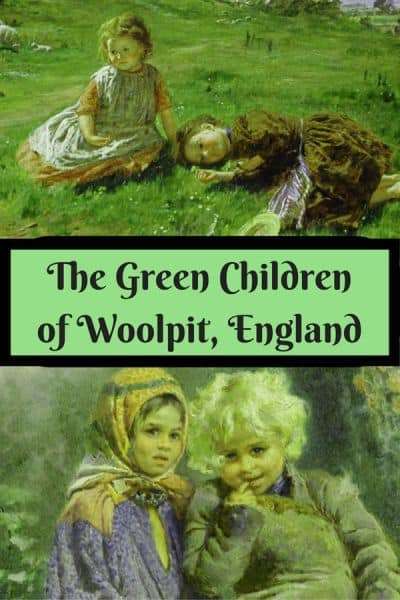
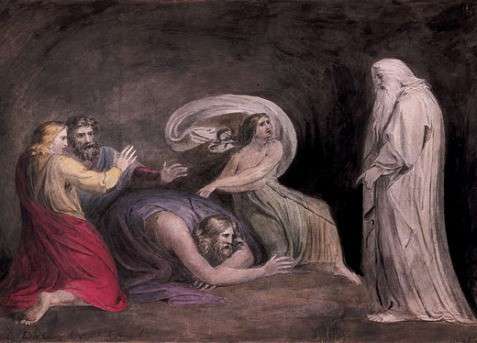
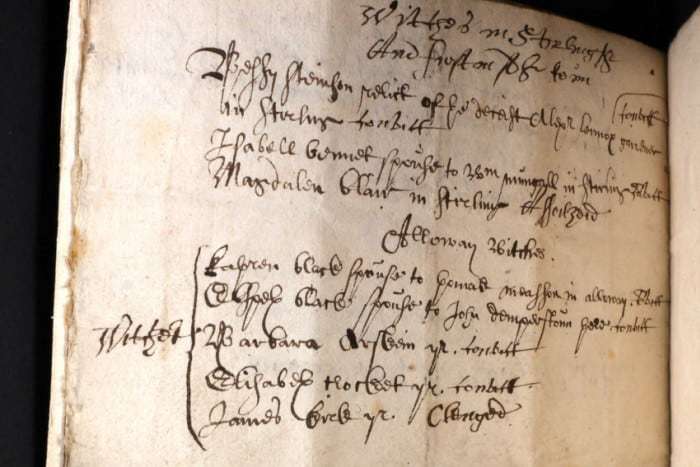
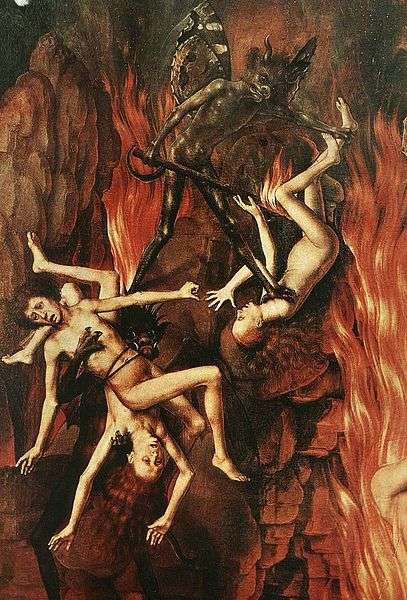
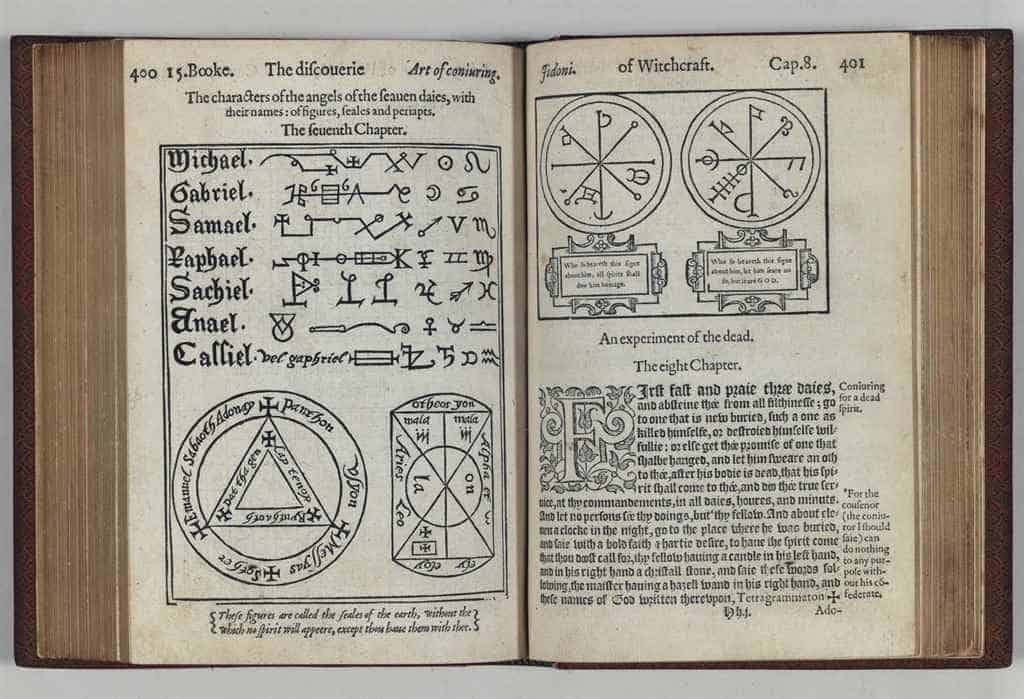
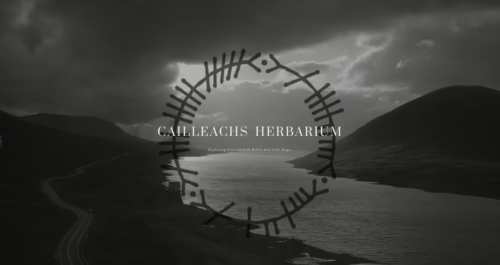
8 comments
Another excellent post.
Thanks Jonathan.
Beautifully written!
Thanks Tameika.
I looking forward to part three. I have some skill as a medium and work with Goetic spirits. Giving thanks to them with candles, incense and blood (tiny amounts) is often enough to engage their assistance or wisdom. The author of ‘Lucifer: princeps’ postulates many of these spirits are ancient leaders, warriors, warlords who were venerated after dead.
AL thanks for the hat tip towards Lucifer Princeps I’ll reread it with this in mind.
Thanks for this well-documented piece, with lots of references as to what the dominant Christian culture of each era thought of such practices. “Talking to ancestors” was and is done all over the world by various people. Often the Indigenous inhabitants of their respective regions practice this, quietly and simply in their daily life. Moving forward, I would love more of a dialogue about that, and less talk of what the culturally-dominant-patriarchal-monotheistic religions of various parts of the world THINK of those practices.
Noted Amy, I tend not to talk about my own personal practices about this but link to the information we have about it, there are lots of sites that cater to the info you are looking for though but something to put in my cauldron of ideas for future writing! Thanks for the lovely words x x